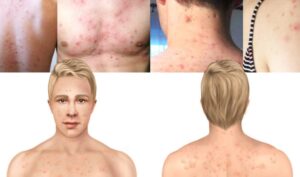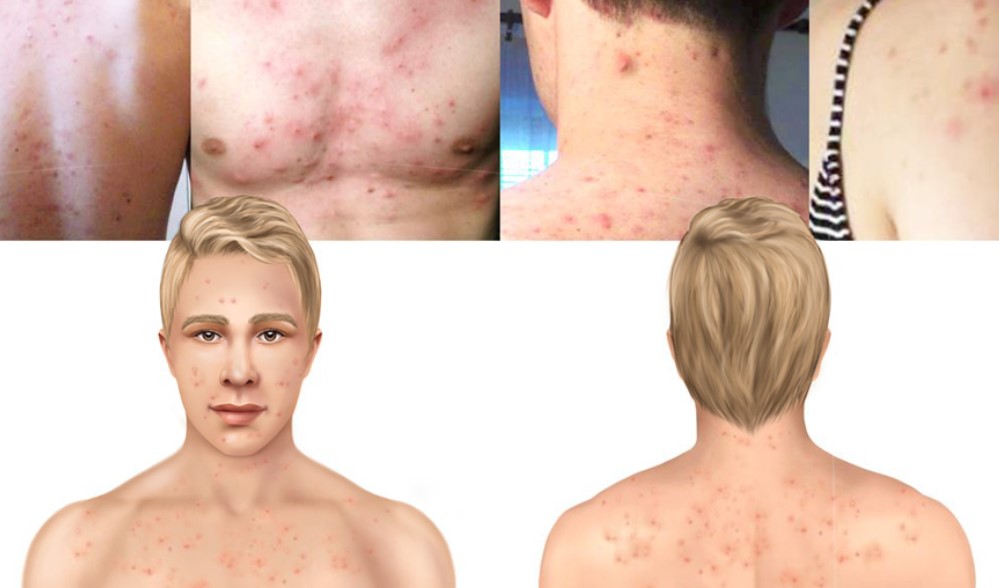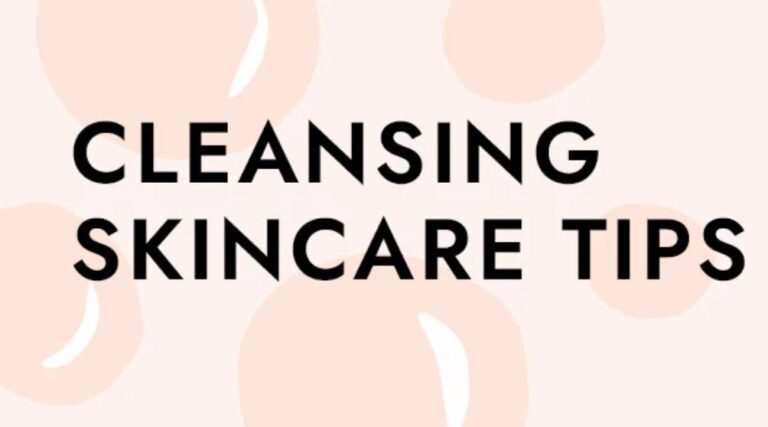Skincare for acne-prone body areas (chest, back, etc.)
Acne can affect the face and other areas of the body, such as the chest, back, shoulders, and buttocks. Managing acne-prone skin in these body areas requires a comprehensive skincare routine that targets these regions’ specific needs and challenges.

Skincare tips and strategies for dealing with acne-prone body areas:
Cleansing
-
- Use a gentle, non-comedogenic (non-pore-clogging) cleanser to wash the affected areas twice daily, preferably in the morning and before bedtime.
- Look for cleansers containing ingredients like salicylic acid or benzoyl peroxide, which help unclog pores and fight acne-causing bacteria.
- Avoid using harsh soaps or scrubbing vigorously, as this irritates the skin and worsens acne.
Exfoliation
-
- Regular exfoliation helps remove dead skin cells, unclog pores, and prevent acne breakouts.
- Opt for chemical exfoliants like alpha-hydroxy acids (AHAs) or beta-hydroxy acids (BHAs) that gently exfoliate the skin without irritating it.
- Use exfoliating products specifically formulated for the body, as the skin on the body is thicker and less sensitive than facial skin.
Topical treatments
-
- Apply over-the-counter acne treatments containing ingredients like benzoyl peroxide or salicylic acid to the affected areas.
- These ingredients help reduce inflammation, unclog pores, and kill acne-causing bacteria.
- Start with a lower concentration to avoid excessive dryness or irritation, and gradually increase if necessary.
Moisturization
-
- Moisturizing is essential to keep the skin hydrated and balanced, even for acne-prone areas.
- Look for oil-free, non-comedogenic moisturizers that won’t clog pores.
- Ingredients like hyaluronic acid can provide hydration without adding excess oil to the skin.
Avoiding irritants
-
- Be mindful of products that can potentially irritate acne-prone skin, such as fragrances, dyes, and heavy oils.
- Avoid wearing tight clothing that can cause friction and irritation in acne-prone areas.
- Choose laundry detergents and fabric softeners that are free from irritants and are suitable for sensitive skin.
Shower after sweating
-
- After exercising or sweating excessively, shower to remove sweat, dirt, and bacteria from the body.
- Use a gentle cleanser to cleanse the affected areas thoroughly and prevent sweat from clogging pores.
Clean bedding and clothing
-
- Change your bedsheets and pillowcases regularly, as they can accumulate dirt, oil, and bacteria that may contribute to breakouts.
- Wear loose-fitting, breathable clothing made from natural fibres to allow the skin to breathe and reduce irritation.
Professional treatments
-
- If over-the-counter treatments are ineffective, consult a dermatologist who can provide specialized therapies for acne-prone body areas.
- Professional treatments may include topical prescription medications, oral medications, chemical peels, or laser therapy.
Consistency is vital when it comes to skincare. It may take time to see noticeable improvements, so be patient and stick to your skincare routine. If you experience severe or persistent acne, it’s best to consult a dermatologist for personalized advice and treatment options.






